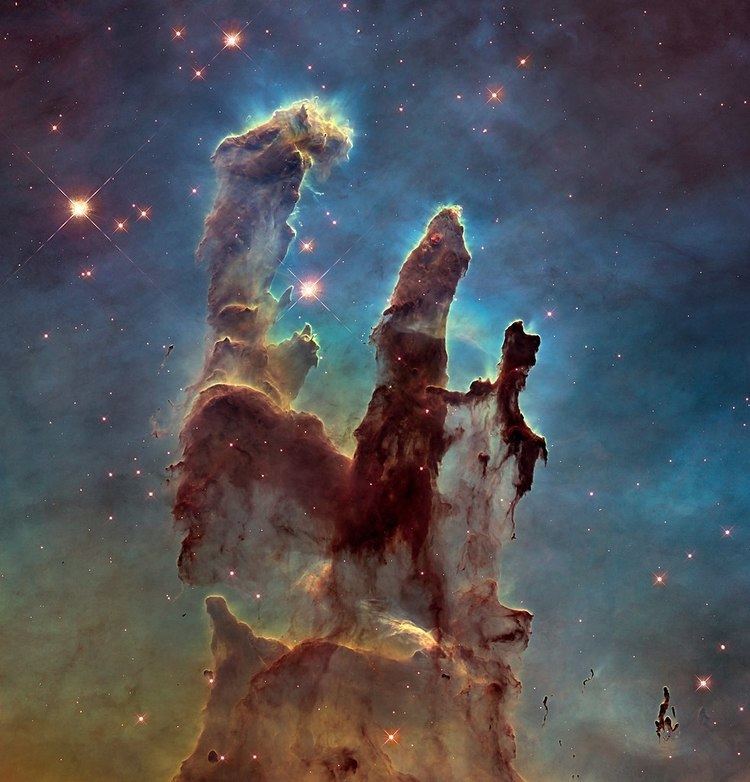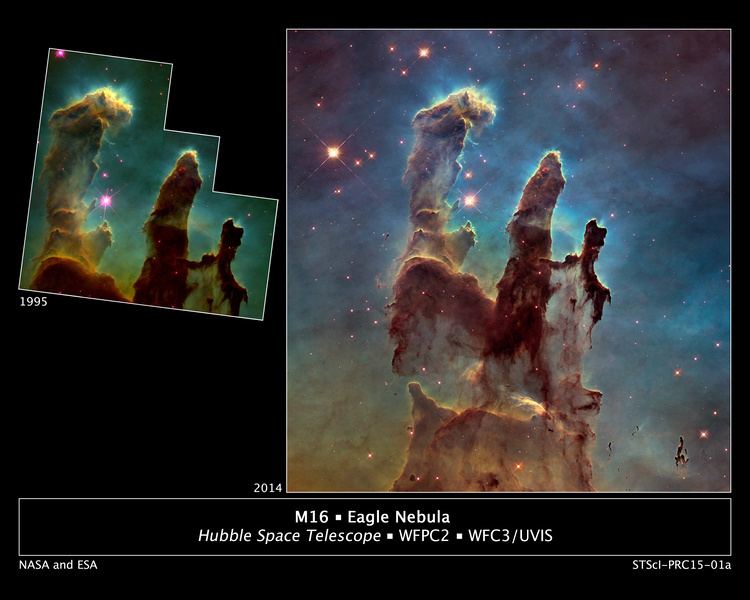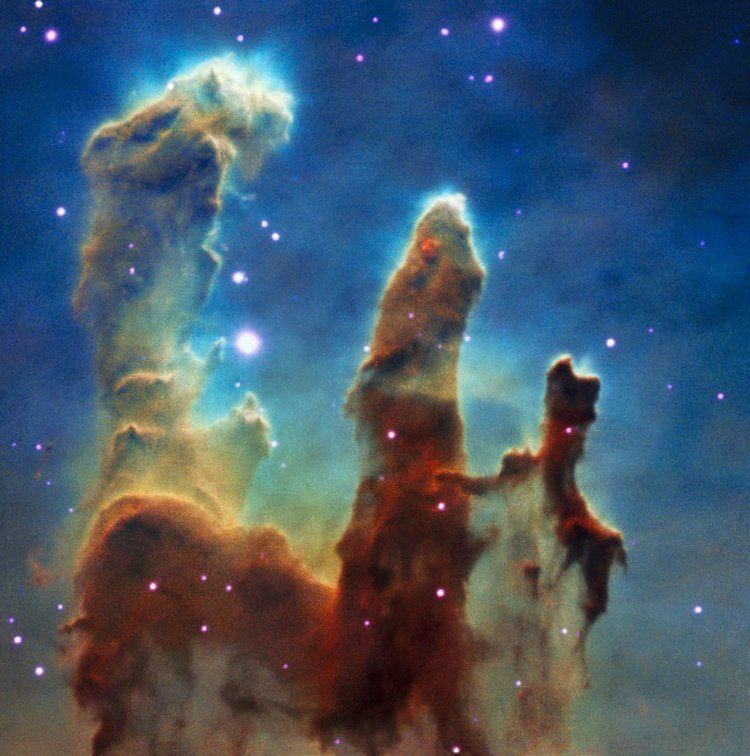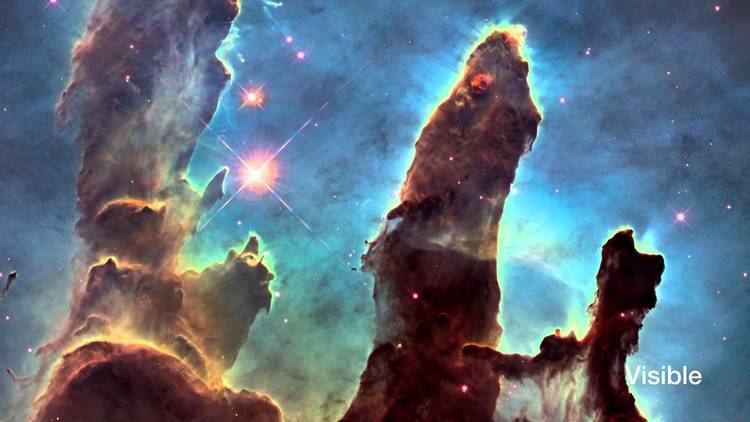Artist NASA | ||
 | ||
Similar Pale Blue Dot, Earthrise, The Blue Marble, View from the Window a, Guerrillero Heroico | ||
"Pillars of Creation" is a photograph taken by the Hubble Space Telescope of elephant trunks of interstellar gas and dust in the Eagle Nebula, some 6,500-7,000 light years from Earth. They are so named because the gas and dust are in the process of creating new stars, while also being eroded by the light from nearby stars that have recently formed. Taken on April 1, 1995, it was named one of the top ten photographs from Hubble by Space.com. The astronomers responsible for the photo were Jeff Hester and Paul Scowen from Arizona State University. In 2011, the region was re-photographed by ESA's Herschel Space Observatory.
Contents
- New Pillars Of Creation Hubble Image Is Breathtaking Video
- Name
- Composition
- Theorized destruction
- Hubbles photo
- Herschels photo
- Hubble revisit
- References
New 'Pillars Of Creation' Hubble Image Is Breathtaking | Video
Name
The name is based on a phrase used by Charles Spurgeon in his sermon The Condescension of Christ:

Composition

The pillars are composed of cool molecular hydrogen and dust that are being eroded by photoevaporation from the ultraviolet light of relatively close and hot stars. The leftmost pillar is about four light years in length. The finger-like protrusions at the top of the clouds are larger than our solar system, and are made visible by the shadows of evaporating gaseous globules (EGGs), which shields the gas behind them from intense UV flux. EGGs are themselves incubators of new stars. The stars then emerge from the EGGs, which then are evaporated.
Theorized destruction

Images taken with the Spitzer Space Telescope uncovered a cloud of hot dust in the vicinity of the Pillars of Creation that Nicolas Flagey accounted to be a shock wave produced by a supernova. The appearance of the cloud suggests the supernova shockwave would have destroyed the Pillars of Creation 6,000 years ago. Given the distance of roughly 7,000 light years to the Pillars of Creation, this would mean that they have actually already been destroyed, but because light travels at a finite speed, this destruction should be visible on Earth in about 1,000 years. However, this interpretation of the hot dust has been disputed by an astronomer uninvolved in the Spitzer observations, who argues that a supernova should have resulted in stronger radio and x-ray radiation than has been observed, and that winds from massive stars could instead have heated the dust. If this is the case, the Pillars of Creation will undergo a more gradual erosion.
Hubble's photo
Hubble's photo of the pillars is composed of 32 different images from four separate cameras in the Wide Field and Planetary Camera 2 on board Hubble. The photograph was made with light emitted by different elements in the cloud and appears as a different color in the composite image: green for hydrogen, red for singly ionized sulfur and blue for double-ionized oxygen atoms.
The "stair-shaped" missing part of the picture at the top right corner originates from the fact that the camera for the top-right quadrant has a magnified view; when its images are scaled down to match the other three cameras, there is necessarily a gap in the rest of that quadrant. This effect is also present on other four-camera Hubble pictures, and can be displayed at any corner depending on how the image has been re-oriented for publication.
Herschel's photo
In 2011 Herschel Space Observatory captured a new image of Pillars of Creation in far-infrared wavelengths, which allows astronomers to look inside the pillars and structures in the region, and come to a much fuller understanding of the creative and destructive forces inside the Eagle Nebula.
Hubble revisit
In celebration of the 25th anniversary since the launch of the Hubble Space Telescope, astronomers assembled a larger and higher-resolution photograph of the Pillars of Creation which was unveiled in January 2015 at the American Astronomical Society meeting in Seattle. The image was photographed by the Hubble Telescope's Wide Field Camera 3, installed in 2009, and produced using near-infrared and visible light exposure.
